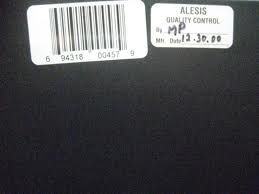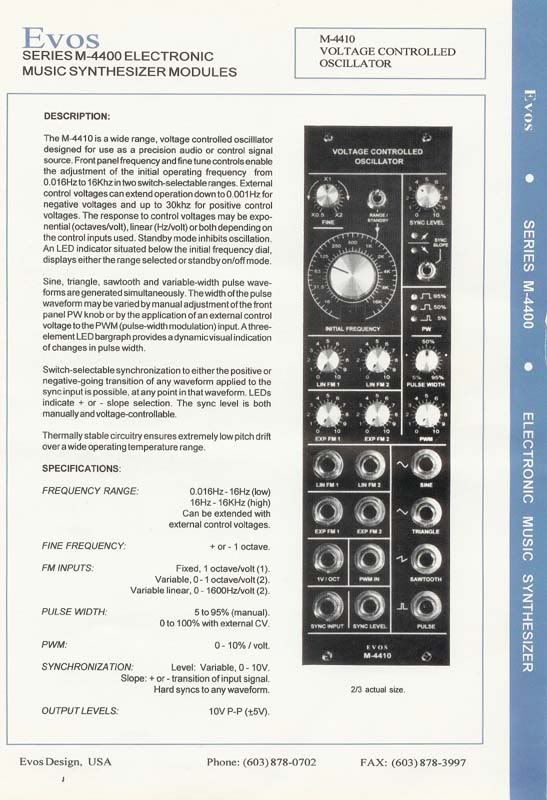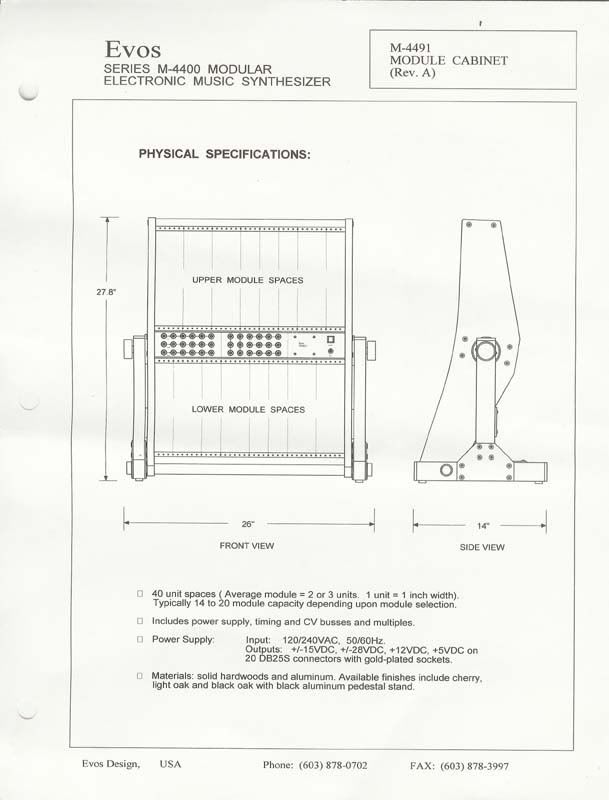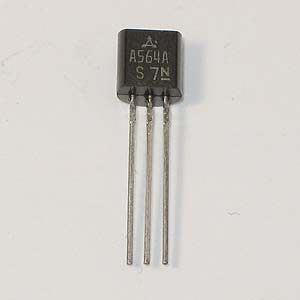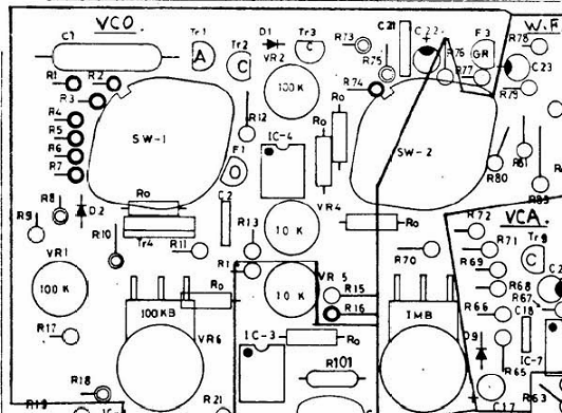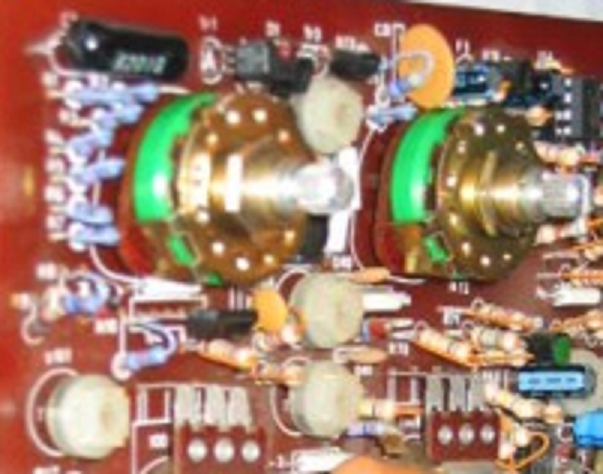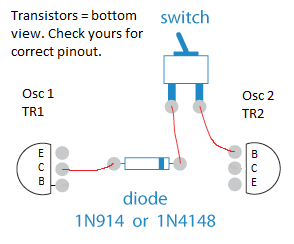Fri Jul 06, 2007 2:36 pm
Nice thread.
Brother Dave has indeed answered the questions well...and with a project this large, there can be endless questions.
Indeed, the Andromeda is the child of too many brews. It took over four years to create due to chip turn-around time (the first chips were pretty broken, and took a long time to iron out the S/H clocking and timing) and the size of the software/polishing the feature set. There were other products under development at the same time, such as the DG8 and the DMPro, that took up a lot of effort as well.
It's important to note that the Andromeda suffered resistance throughout it's development, sometimes subtle, sometimes to the point of near-cancellation. It was so deep and time-consuming, that there were those who wanted to wash their hands of it at various points. Folks like Dave, Julie, Dave Seaton, and others went to bat and kept it alive. A6 fans should offer thanks to them for fighting the good, continuous fight. Congrats again as well to Phil and Jeff for the killer developement/coding, and for the great ideas they added along the way. And again to Phil for putting up with me.
The sound of the A6 is not as large as a Minimoog, or a Moog Modular. I said this on the AH mailing list just prior to its release, that it won't replace either of those synths. Something about the 5V unipolar ASICs (3.3V effective operating range) changed the sound of the original circuitry. The filters were breadboarded and sounded pretty close to our vintage units, with as much variance from an original than any original shows against another (Moogs sound different from each other. I've heard killer 901b-based Modulars and deadly dull, fully cleaned and calibrated 921b-based units [at least in terms of oscillators]). Even the Chroma is larger-sounding than the raw, one waveform per oscillator A6 tone. Yes, it's been observed that you need to use tricks to enlarge the overall Andy tone. Thankfully, there are several ways to achieve this.
One trick I've had in mind (Mix Mode) is to use Colin's sub-osc@34.7 volume trick, with Osc 2 soft or hard sync'd to Osc 1, with just enough Osc 2 subosc to create a single, large waveform, effectively the sound of just one, larger-than-normal-A6-oscillator (can use Filter 1's HPF to track the fundamental with resonance to increase the size). Use Unison X and or Chord to "tune" another voice, having it act as a second Oscillator to the first. It would have to be the same overall Program, filter settings and envelope times, etc.
Route a satisfactory result out an Aux jack, into Voice 15 Audio In. Program Voice 15's Filters in parallel, with Filter 2 open and Filter 1's BPF at about 40-80Hz. Set that Program to the Main outs. This is just blue sky conjecture, but using the filters in an Audio In voice to mimic the Moog filters' seeming bass boost, as the resonance effectively shuts off down toward and past about 125Hz, is part of the early Moog sound. Of course, you'll have to use an envelope to Filter 2 Resonance or through the TG for the source voices...
And note... The very fastest setttings, in either 1.40.12 or the beta rev .13 are faster than the Modular or Mini envelopes. We found that the Minimoog VCA would click with an input voltage rise time faster than about 750uS. This might vary between Minis and with calibration as well, but the point stands; the Minimoog was not a speed hound. Use slower Engine Optimizer settings. This also cleans up the PWM some.
Obviously, the VCAs don't have the dynamic range that vintage units have.
Someone asked about calibration of the voice FM; Mic, was that you? Basically, the A6 has far greater depth of modulation than the Xpander per Mod route. Each Andromeda Mod route can sweep the entire range of its destination. The Xpander's control routes are limited to what, a minor sixth? I don't know if its FM is the same limited depth; I don't remember it having the out-of-control mangling of a modular with the route wide open. The A6 oscillator cross FM routes go way, way out into that territory. I know that there are oscillators that are stable enough to allow effective use of that sort of depth, but...why? This is a moot point unless you are using a triangle core oscillator ala the Buchla and Plan B designs. It's an entirely different way of flying, I believe the "Airplane" quote says. So, on the A6, only use the first quarter or so of the available depth, and you still may be well beyond the range of the Xpander, if you want to try to zero in on that sort of thing. And no, the associated VCAs are not attached to any code that would allow them to be optimized. I remember having asked about it, and it sounded both difficult and unlikely.
Want better PWM? Use an external hardware LFO through the Osc Mod input.
Has anyone used an audio-rate external LFO on the Filter input, with large amounts of resonance and voices going at once? Could be a delightful destruction.
If Elhardt is lurking, have you used my suggestion regarding the 1-16 Audio In, for violin body modification effects?
Regarding Marcus Ryle and Michelle... Dave, if you blinked, you would have missed the early engineering specification meeting they attended... As mentioned in the A6 Tips and Tricks document (a great thing!), the square wave on each oscillator has its own VCA. This is to allow a level blend with one of the sawtooth polarities, which Marcus showed to have a different sound than standard PWM. This is one of the things Marcus and Michelle gave us, and they may have helped Rob do some of the overall uP update planning.
Brother Dave, be careful with your prototype. Both of mine are now dead. It turns out that you can't do a reset on them; it wipes something out in the code (tuning tables plus???) Now it's down to you and Arnd. Regarding the prototypes using the rev 2 voice chips (production units use rev 3), the rev 2 had linear smoothing for the control signals, and as such, there is audible zipper noise. There are also some bugs that were fixed...but IIRC, the hard sync was a bit better than on the rev 3s. We needed the soft sync tightened, and for some reason, the hard sync might have suffered.
I still have a couple of light grey on grey front panels for sale. The thing about replacing the panels is not so much the 72 knobs; it's if you want to go the whole route and replace the far larger number of buttons. They sit tightly on their switches, and it's a bit of a pain to change them out.
I can't begin to imagine the effort required to replace the LEDs...
BTW, there are rumors that there may be differences between the red and blue Andys. The only difference is the color of the overlay itself. There are no technical differences. However, only 78 or so were sold prior to the bankruptcy, IIRC, not counting the first hundred or so units that went out to reps (don't know how many there were in that batch, or if there were any). We sent the remaining red overlays to Taiwan when then took up production, but I don't know if any further red units were produced. (And kudos to those who traveled to Taiwan to make sure that production was happening...that's effort...)
Thank Dave Bryce for the red units. It was his good idea.
Also, the chips didn't change at any point that I'm aware of; it is far too costly to run revisions for this to have happened casually. There may be variation in different pressings, but this is a subject beyond my ability to comment. Suffice to say, one major change that occured after the bankruptcy was the creation of an automated test fixture for the chips. It had been performed by ear and by hand by Jared and another gent at the old Hawthorne location.
Speaking of the Hawthorne location and the bankruptcy... When it became clear that we were losing the Hawthorne warehouse/assembly line/testing facility/parts stock/repair division/warehouse, Taiho and I went down and stripped it of all A6-related parts, and stored them at the then current location. We only had one A6 in-house through the bankruptcy, and we were still receiving calls from bands to get a hold of one... We had to keep it for reference, and to send to reviewers. Colin had been posting on TGS at the time, lamenting the extended wait for his already paid-for order... We built him one from the rescued parts, tested it, and sent it out. IIRC, there weren't enough parts to built two.
The folks who actually assembled the Andromeda at the US facility deserve much credit. It was a multi-stop assembly line, and the guys who set it up and wrote the assembly procedure have a major accomplishment on their hands. Thank you all! A few of us went down there every day for a while to help this process, as well as to assemble the first units shipped to the public (this is after tester units/sound design units/rep units). That joker FAST on AH has one of them, and it has my initials for quality control. A few of the engineers share in this; you don't know how many people kicked ass to make this happen. Some of use worked 80+ hour weeks at the end of its development, and some must have worked that much during it. Dave was one key to its existence; without a genuine keyboard person in marketing, several decisions might have been out of our hands. Dave and the project managers were very firm in defending it, and the engineers enjoyed the opportunity to basically do what had been specified without having to justify it every so often to those who didn't understand. It wasn't war, but when something is so close to your heart, you're ready to fight. Those who didn't understand analog synths, be they friend or partial foe, just seemed to leave us alone.
Dave has already explained the fights regarding the names on the unit on another forum. Dave was right, Andromeda is a great name for it. And oh, how hard we tried to find another that fit.
What would I change about the unit? If I could, I would re-engineer the voice chips to have the proper oscillator sonic oomph, a signal path with the punch of a modern analog such as the Wiard or Technosaurus, the filters to sound like the things they were genuinely derived from, and a modern uP to snap up those envelopes and raise the nyquist so that the LFOs could be opened up to higher rates. Anyone want to loan me a million dollars? I'll refund any available change after testing etc.
Speaking of the fabulous Wiard, I felt that it should have won Electronic Musician's Editor's Choice award, and IIRC said as much to the editor who phoned us. The Wiard 300 VCA/Env combination's variable slopes make for the finest power-shaping resource I've encountered.
God bless Bob Moog, over and over. He and a couple of other progenitors asked after working with us on the project; we wanted to keep most of it in our own hands, and thankfully, said progenitors went on to do their own new classics. We are sooo lucky...Peake
Newbie
--------------------------------------------------------------------------------
